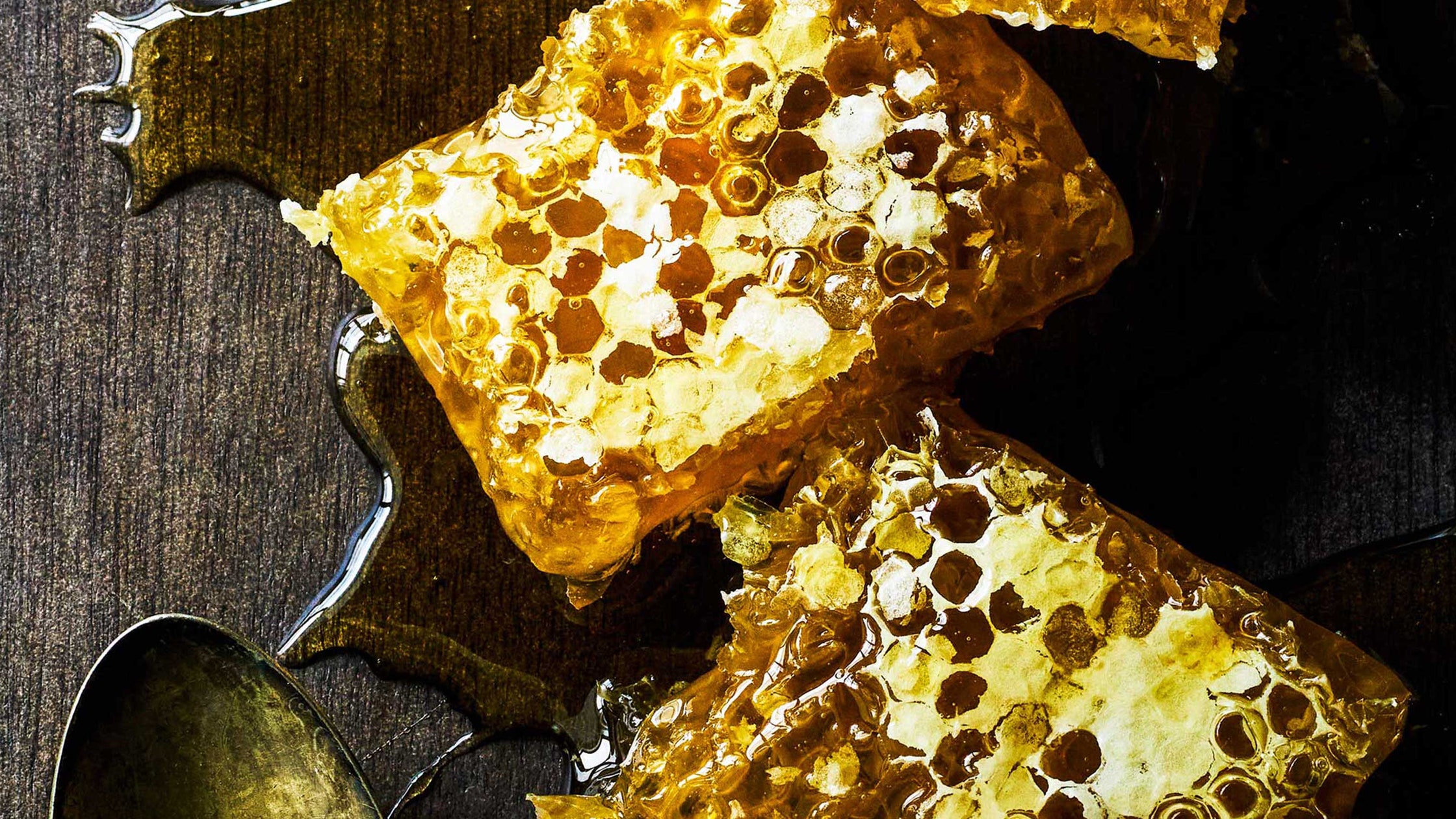The Wonders of Honey: A Comprehensive Guide
It’s hard to resist bees. The most complex and sophisticated of insects, they live in well-organized social structures, defending themselves and their queens, and clustering together to keep warm throughout the winter. Currently facing worrying declines due to intensive farming practices, bees are invaluable workers, pollinating 80 percent of our food, contributing approximately £1.8 billion annually in the UK alone. And then, there’s the honey… Honey, how I love thee.
When you are as enthusiastic about honey as I am, it can be quite tricky to take a casual approach to it. Memories flood back of my holiday in Provence as a teenager when I first tasted lavender honey. I indulged by eating it straight from the pot – a whole pot a day, which quickly showed on the scale. There were also those precious years searching for cafés that offered honey in tea. Additionally, I fondly remember serving honey with Pecorino cheese for starters or desserts, delighting guests with an irresistible blend of flavors.
The Historical Significance of Honey
We have been entranced by honey since the dawn of time. Cave drawings illustrate honey harvesting by humans dating back about 10,000 years, suggesting that it has been cultivated since the earliest days of agriculture. Pliny the Elder referred to honey as ‘the sweat of the heavens’ and ‘a saliva emanating from the stars’; during the Roman Empire, it was occasionally used as a currency instead of gold for tax payments.
Honey’s Health Benefits
Honey has always straddled the line between ingredient and medicine. It possesses antimicrobial and antiviral properties, making it antioxidant-rich. Aristotle believed that consuming honey prolonged life, while Hippocrates prescribed it for various ailments, even recommending it for hair loss. The Roman army surgeon Pedanius Dioscorides noted its use in treating stomach diseases, relieving coughs, and aiding wounds.
Modern Remedies and Research
Today, honey is gaining recognition for its medicinal properties. The National Institute for Health and Care Excellence advocates for honey as a primary treatment for acute coughs caused by upper-respiratory-tract infections before considering antibiotics. Furthermore, researchers at Misr University for Science and Technology in Egypt plan to explore honey’s potential in treating Covid-19.
While scientific studies on honey as a cure remain limited, its usage is well-documented in alternative and folk medicine. Apitherapy, popular in China, focuses on bee products. Notably, during the pandemic, a survey of beekeepers in Hubei province found none exhibiting symptoms of the virus, similarly observed among apitherapists and their patients treated with bee venom, enhancing immune system responses.
Exploring Honey Products
For those curious about bee products, the more natural they are, the better their quality. Look for terms such as ‘raw’ and ‘unprocessed’ to ensure you’re getting the maximum health benefits. Heating honey above room temperature can degrade its beneficial properties, leading to commercially available options that often resemble just sugar.
Creative Drinks with Honey
Mead
Dating back to 7,000 BC, mead is thought to be the first deliberate alcoholic beverage made by humans. Modern craft mead options, such as those from Gosnells of London, offer a light and crisp signature blend.
Honey and Lemon
A timeless remedy for coughs and colds, combining lemon juice and honey creates a comforting beverage. For added warmth before bed, consider transforming it into a hot toddy by including a dram of whisky and spices like ginger, known for its anti-inflammatory effects.
Honeygar
This tincture of raw cider vinegar and honey gained fame from Sir Ranulph Fiennes, who attributed his arthritis relief to it. While scientific evidence remains unproven, many find it beneficial for digestion. It surprisingly complements ice, sparkling water, and fresh mint.
Honey Types and Their Medicinal Uses
Manuka Honey
Native to New Zealand and parts of Australia, Manuka honey is renowned for its unique grading system that reflects its active ingredient concentration. It is chiefly used for wound treatment due to its strong antimicrobial properties.
Melipona Honey
Employed by Mexico’s Mayan community, this honey comes from stingless bees and is known for its antibacterial qualities. It’s effective for addressing eye infections and digestive issues and can be used directly in culinary preparations.
Delicious Honey Dessert Recipe
Whipped Feta and Honey Cheesecake
This delightful cheesecake brings together the savory flavor of feta and the sweetness of honey. To make it easier, you may substitute traditional pastry with a crushed-biscuit base or simply serve the whipped vendor mixture with shortbread.
Serves four
For the Base
- 25g melted butter
- 50g kadaif pastry (or shredded filo)
- 1 tbsp caster sugar
For the Cheesecake Cream
- 160g full-fat cream cheese
- 160ml extra-thick double cream
- 40g icing sugar
- 40g honey (a grainy option works best)
- 50g smooth and creamy feta
- Seeds from half a vanilla pod (or 1 tsp vanilla essence)
For the Garnish
- Raw, runny honey
- Fresh oregano or marjoram leaves
- Handful of whole-roasted almonds, roughly chopped
- Mellow-flavored seasonal fruit (white peaches or blueberries are ideal, along with raspberries or apricots)
Instructions
- Preheat the oven to 180°C/gas mark 4. Combine the melted butter with the pastry and sugar.
- Fluff the pastry to evenly coat it with sugar and butter.
- Divide into four servings and place on a lined baking tray. Bake for 12–15 minutes or until golden.
- Allow to cool and store in an airtight container until required.
- Combine all cheesecake cream ingredients in a large bowl gently.
- To assemble, place a pastry base on each plate, top with cheesecake cream, sprinkle with herbs and nuts, add fruit, and drizzle with honey.




